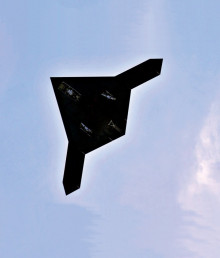One of the most rapidly growing areas of innovative technology adoption involves autonomous systems. The U.S. military’s use of these systems – especially armed autonomous systems – is not only changing the face of modern warfare, but is also altering the process of decision-making in combat operations. These systems are evolving rapidly to deliver enhanced capability to the warfighter and seemed poised to deliver the next “revolution in military affairs.” However, there are increasing concerns regarding the degree of autonomy these systems—especially armed autonomous systems—should have. Until these issues are addressed, military autonomous systems may not reach their full potential.
While DoD officials have issued comprehensive guidance regarding the need to ensure that autonomous systems have operator oversight – especially for lethal autonomous systems, that has not sufficiently mitigated public concerns that the U.S. military will unleash lethal autonomous systems that may do unintended harm. In the face of rapid advances in artificial intelligence, the need to contend with enemy systems that operate at machine speeds, and the growing concerns expressed in popular culture about the way machines might turn on their human masters, these concerns have grown. In short, will HAL try to kill us?
Read more of my Defense Media Network article about the possible dark side of autonomous systems here


